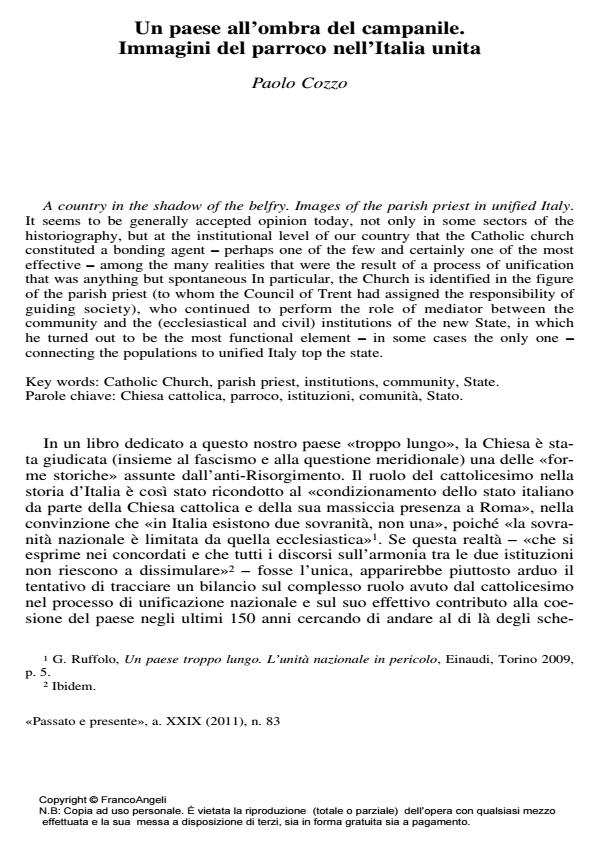Un paese all’ombra del campanile. Immagini del parroco nell’Italia unita
Titolo Rivista PASSATO E PRESENTE
Autori/Curatori Paolo Cozzo
Anno di pubblicazione 2011 Fascicolo 2011/83
Lingua Italiano Numero pagine 19 P. 57-75 Dimensione file 316 KB
DOI 10.3280/PASS2011-083004
Il DOI è il codice a barre della proprietà intellettuale: per saperne di più
clicca qui
Qui sotto puoi vedere in anteprima la prima pagina di questo articolo.
Se questo articolo ti interessa, lo puoi acquistare (e scaricare in formato pdf) seguendo le facili indicazioni per acquistare il download credit. Acquista Download Credits per scaricare questo Articolo in formato PDF

FrancoAngeli è membro della Publishers International Linking Association, Inc (PILA)associazione indipendente e non profit per facilitare (attraverso i servizi tecnologici implementati da CrossRef.org) l’accesso degli studiosi ai contenuti digitali nelle pubblicazioni professionali e scientifiche
It seems to be generally accepted opinion today, not only in some sectors of the historiography, but at the institutional level of our country that the Catholic church constituted a bonding agent - perhaps one of the few and certainly one of the most effective among the many realities that were the result of a process of unification that was anything but spontaneous In particular, the Church is identified in the figure of the parish priest (to whom the Council of Trent had assigned the responsibility of guiding society), who continued to perform the role of mediator between the community and the (ecclesiastical and civil) institutions of the new State, in which he turned out to be the most functional element - in some cases the only one - connecting the populations to unified Italy top the state.
Parole chiave:Chiesa cattolica, parroco, istituzioni, comunità, Stato
Paolo Cozzo, Un paese all’ombra del campanile. Immagini del parroco nell’Italia unita in "PASSATO E PRESENTE" 83/2011, pp 57-75, DOI: 10.3280/PASS2011-083004